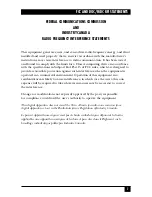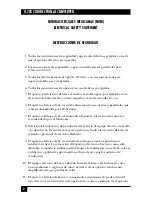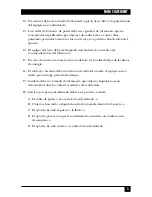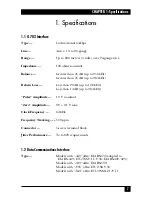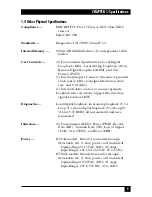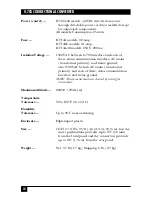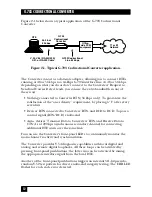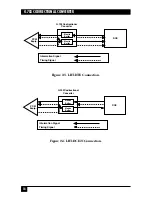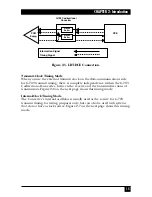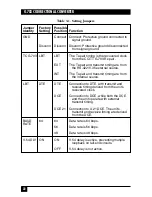
12
G.703 CODIRECTIONAL CONVERTER
Figure 2-1 below shows a typical application of the G.703 Codirectional
Converter.
Figure 2-1. Typical G.703 Codirectional Converter application.
The Converter can act as a data-rate adapter, allowing you to connect DTEs
running at 48 or 56 kbps to a 64-kbps G.703-interface line. At 48 or 56 kbps,
depending on what you do or don’t connect to the Converters’ Request to
Send and Carrier Detect leads, you can use the extra bandwidth in any of
these ways:
• Nothing connected to Converter RTS (56 kbps only): To guarantee the
satisfaction of the “ones density” requirement, by placing a “1” after every
seven bits.
• Devices’ RTS connected to Converters’ RTS, and DCD to DCD: To pass a
control signal (RTS/DCD) end-to-end.
• Async devices’ Transmit Data to Converters’ RTS, and Receive Data to
CTS: As a 1200-bps asynchronous secondary channel for connecting
additional DTE units over the same link.
You can use the Converter’s front-panel LEDs to continuously monitor the
main channel’s activity and synchronization.
The Converter provides V.54 diagnostic capabilities with local digital and
analog and remote digital loopbacks. All three loops can be activated by
pressing front-panel pushbuttons; the latter two can be activated by raising
the appropriate interface signal from the local DTE.
Another of the front-panel pushbuttons triggers an internal 511-bit pseudo-
random V.52 test pattern for direct end-to-end integrity testing. The ERR LED
flashes for each each error detected.
G.703
Codirectional
Converter
DTE
48, 56, or
64 kbps
T1 or E1
Network
V.35, V.36 (RS-449/422),
X.21, or RS-530 Cable
G.703 Codirectional
Line, 64 kbps
Office-
side PCM
equipment


